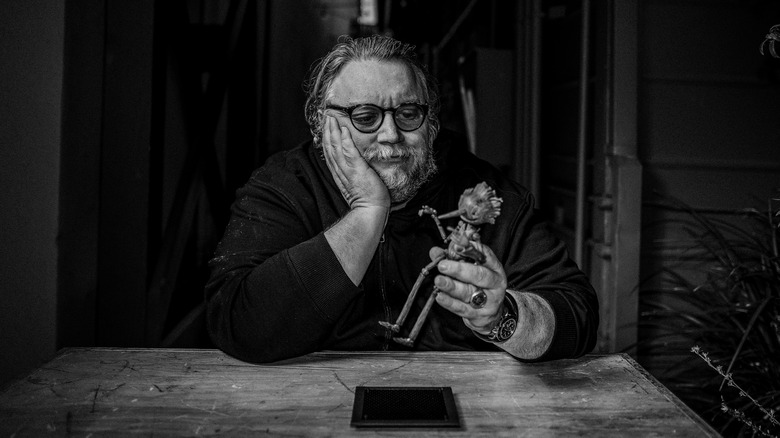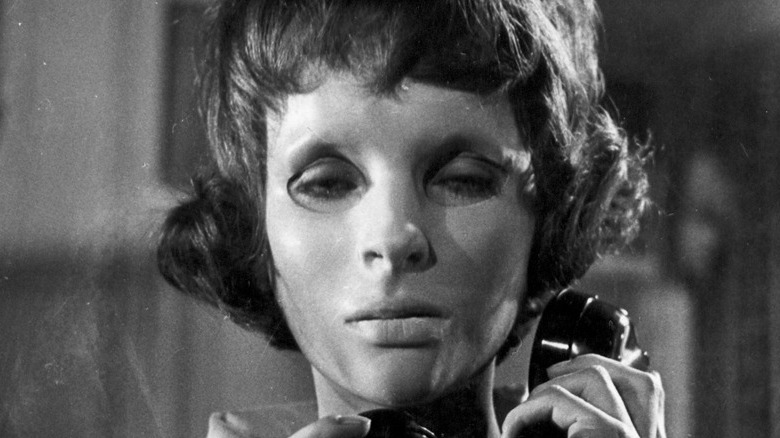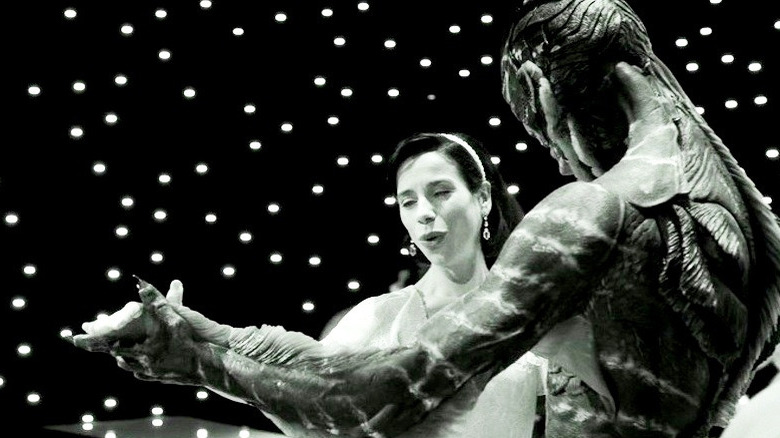
Guillermo del Toro is often referred to as the "Maestro of Monsters," and looking at his filmography it's not hard to see why. Del Toro's filmography often involves monsters in some shape or form. These monsters include but aren't limited to: the massive Kaiju threatening the planet in "Pacific Rim," the water-breathing humanoid in "The Shape of Water," and the viral vampire invasion of "The Strain." Del Toro's often gone into great detail while discussing the various influences for his films in interviews, including the work of Alfred Hitchcock and other classic horror movies such as "The Creature from the Black Lagoon" and "Bram's Stoker Dracula." But he hasn't revealed what his all-time favorite creature feature is ... until now.
Last year, del Toro and 44 other filmmakers — including fellow auteurs Quentin Tarantino and Martin Scorsese — were approached by IndieWire to discuss their favorite horror films of all time. Del Toro's pick is not only a film that falls into his wheelhouse of classic horror films, but according to him it also happens to be the film that shaped his entire approach to storytelling.
The Girl Without A Face

Del Toro's choice was the 1960 film "Eyes Without A Face," which stars Edith Scob as a woman who was horribly disfigured and kept in isolation by her surgeon father as he attempts to give her a new face. Unfortunately, that process includes kidnapping and attempting surgery on countless young women — which usually leads to their deaths.
The film struck a chord with del Toro, particularly with how it depicted Scob's Christiane Génessier.
"[The main character is] like an undead Audrey Hepburn. It influenced me a lot with the contrast between beauty and brutality ... The clash of haunting and enchanting imagery has seldom been more powerful. 'Eyes Without a Face' boasts an extraordinary soundtrack [by Maurice Jarre] too!"
"Eyes Without A Face" is often regarded as one of the most influential horror films ever made, even inspiring the Billy Joel song of the same name. (Joel, it turns out, was a huge fan of horror films as well.) Part of that is due to its haunting imagery, including the final shot of Christiane walking out into the snow with a dove in her hands. Going hand in hand with del Toro's comments about beauty and brutality intermingling, this takes place at the same time that Christiane's father is viciously mauled by the dogs he kept locked up.
Blending Beauty And Brutality

Del Toro has used a blend of beauty and brutality in his own filmography, most notably his 2017 Oscar-winning hit "The Shape of Water." That film blended a surreal dance between Sally Hawkins' Eliza and the amphibious creature — set in black and white, I might add — with gruesome scenes including Michael Shannon's Colonel Strickland ripping off his damaged fingers while recalling the myth of Samson pulling down a temple.
Other del Toro films that take this approach include "Crimson Peak," with soft snow falling on a house haunted by bloody ghosts, and even "Pacific Rim," with Idris Elba standing on top of his massive mecha and shrouded by light.
The trend continues with del Toro's recent "Nightmare Alley" — shining gold office buildings and gently falling snow are punctuated with gory sequences including Stan Carlisle (Bradley Cooper) brutally beating in a man's face and getting shot by his partner in crime Lilith Ritter (Cate Blanchett.) The influence of "Eyes Without A Face" continues to be felt across del Toro's films.
Read this next: The Horror Movies We Can't Wait To See In 2022
The post The Classic Horror Film That Inspires Guillermo del Toro's Work appeared first on /Film.
from /Film https://ift.tt/YOiylr2
